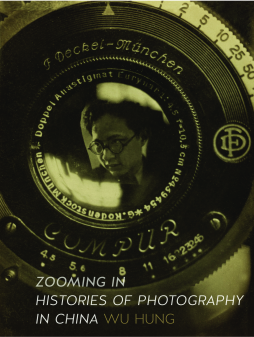
Additional Information
Book Details
Abstract
From the first sets of photographic records made by Western travelers to doctored portraits of Chairman Mao and the avant-garde photographic performances of the post–Cultural Revolution era, photography in China has followed divergent paths. In this book, Wu Hung explores the multiple histories of photographic production in China, using them to tell a larger story about China’s shifting sociopolitical contexts and the different agendas, technologies, and aesthetics that have helped define its arts.
At the center of the book is a large question: how has photography represented China and its people, its collective history and memory as well as the diversity of Chinese artists who have striven for creative expression? To address this question, the author offers an in-depth study of selected photographers, themes, and movements in Chinese photography from 1860 to the present, covering a wide range of genres, including portraiture, photojournalism, architectural and landscape photography, and conceptual photography. Beautifully illustrated, this book offers a multifaceted and in-depth analysis of an important photographic history.
“In this book, Wu brings nuance to the history of photography in China, offering a fresh, postcolonial context for photographs both well-known and previously unstudied. . . . The book is well illustrated throughout, with careful photographic reproductions. It includes exhaustive references, a bibliography, and a brief index. It is recommended to complement collections that include books like Brush & Shutter or Terry Bennett’s series of History of Photography in China. Zooming In is also relevant for historical research and for collections that support postcolonial approaches to research.”
— ARLIS/NA Reviews
"[An] accomplished book. Covering a wide range of genres including portraiture, photojournalism, architectural and landscape photography and contemporary conceptual practices, and filled with a high number of striking illustrations, Zooming In demonstrates the enduring influence of Western visual culture on Chinese cultural identity."
— Burlington Magazine
Wu Hung is the Harrie A. Vanderstappen Distinguished Service Professor of Art History at the University of Chicago. His most recent books are A Story of Ruins and TheArt of the Yellow Springs, the latter published by Reaktion Books.
Table of Contents
| Section Title | Page | Action | Price |
|---|---|---|---|
| Cover | Cover | ||
| Zooming in Histories of Photography in China Wu Hung | 3 | ||
| Imprint Page | 4 | ||
| Contents | 5 | ||
| Introduction | 7 | ||
| Part One: Representing China and the Self | 17 | ||
| 1. Inventing a ‘Chinese’ Portrait Style in Early Photography: The Case of Milton Miller | 19 | ||
| 2. Photography’s Subjugation of China: A ‘Magnificent Collection’ of Second Opium War Images | 47 | ||
| 3. Birth of the Self and the Nation: Cutting the Queue | 85 | ||
| 4. Self as Art: Jin Shisheng and His Interior Space | 125 | ||
| Part Two: History Revisited | 159 | ||
| 5. Searching for Immortal Mountains: The Origins and Aesthetics of Chinese Landscape Photography | 161 | ||
| 6. A Second History: An Archive of Manipulated Photographs | 189 | ||
| 7. The ‘Old Photo Craze’ and Contemporary Chinese Art | 219 | ||
| Part Three: Living in Time | 251 | ||
| 8. Mo Yi: The Story of an Urban Ethnographer | 253 | ||
| 9. Liu Zheng: My Countrymen | 277 | ||
| 10. Rong Rong: Ruins as Autobiography | 301 | ||
| 11. Miao Xiaochun: Journeying through Space and Time | 323 | ||
| References | 349 | ||
| Bibliography | 377 | ||
| Acknowledgements | 387 | ||
| Photo Acknowledgements | 389 | ||
| Index | 391 |
